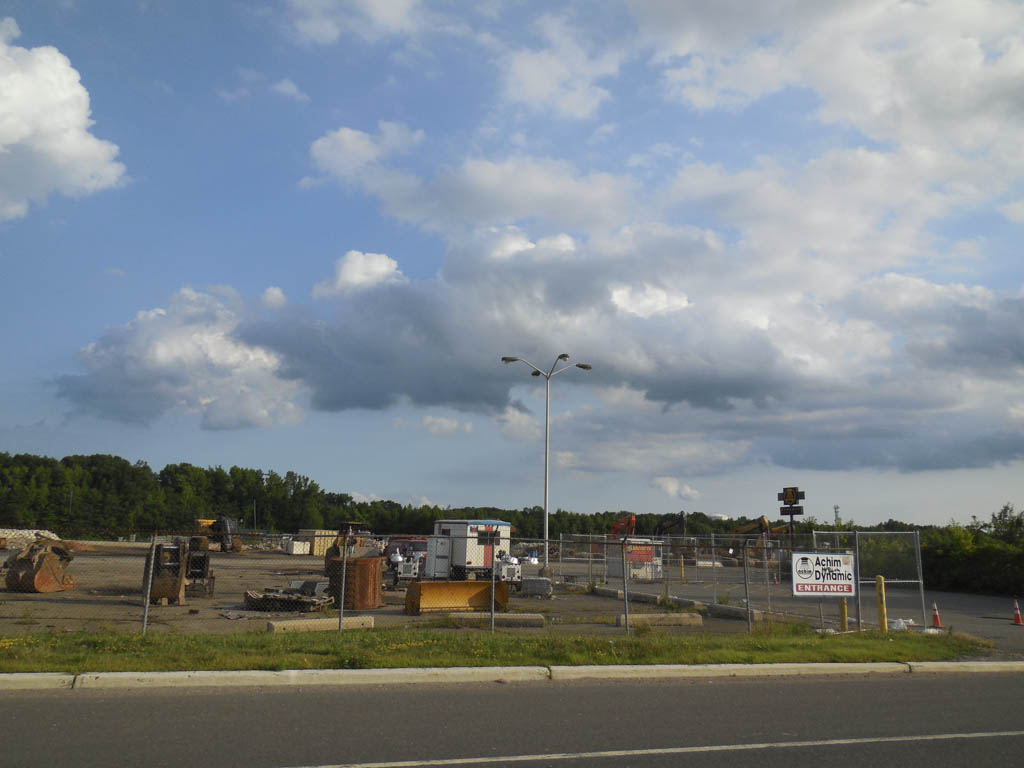SAYREVILLE – The Sayreville Borough Council has tabled an ordinance that will allow for the construction of 1.8 million square feet of warehouse space near Main Street amid concerns towards the facility’s potential impact on residents.
The council voted to table the ordinance amending Sayreville’s waterfront redevelopment plan on May 28. It is scheduled to reappear before council members during their July 22 meeting, where they may adopt or deny the ordinance.
If adopted, the ordinance will, among other changes, permit the use of self-storage facilities in the waterfront redevelopment area, providing that the facility is in a multi-story format and offers climate-controlled storage options. No more than three of these facilities are permitted in the redevelopment area.
The council’s potential action is focused on the Fulton Redevelopment Area, an approximately 158-acre vacant area in the central portion of the borough, south of Main Street and north of the Conrail Railroad Raritan River Line. The area is owned by Lorraine Munnia Mocco, according to a redevelopment plan prepared by Heyer, Gruel & Associates.
The Sayreville Planning Board found that the redevelopment plan was not consistent with the borough’s Master Plan and was not willing to amend the Master Plan to make it consistent, but the Borough Council has the statutory right to not follow the recommendation of the Planning Board, according to Borough Attorney Michael DuPont.
According to the redevelopment plan, the area has been subject to land use applications and litigation, with the primary issue being whether residential development is permitted on the property. Susan Gruel, the borough’s planner, said the area’s existing zoning results in approximately 600,000 square feet of warehouse space and 207 residential homes.
The proposed redevelopment plan for the area will provide for approximately 1.8 million square feet of warehouse space and prohibit any residential uses on the site, according to Gruel.
While the new redevelopment plan will increase the warehouse space, borough officials reasoned that the removal of residential uses would be more beneficial to Sayreville.
“If you do warehouses, there are no children,” Mayor Kennedy O’Brien said. “You get the revenue without the expense. We’re not picking up garbage, we’re not picking up leaves, we’re not providing municipal services, we’re just collecting the taxes. Whereas if it becomes residential, we’ll have another $4.8 million of school cost to teach the kids and then we have to provide the rest of borough services.”
The redevelopment plan for the warehouse space received support for potentially generating revenue and jobs, but residents also voiced concerns with the potential negative impacts it may have on safety, lighting, property values and traffic.
Although the 1.8 million square of warehouse space was found by CME Associates to generate less overall traffic than 600,000 square feet of warehouse space and 207 residential homes, according to the redevelopment plan, CME Associates also found that traffic still needed to be addressed by the project. The firm stated that Main Street to west of the proposed facility is inappropriate for a large volume of truck traffic and recommended that all truck traffic be required to enter and exit from the east on Main Street, which attorney Jeff Lehrer, representing the warehouse’s applicant, said the facility would reflect.
“All truck traffic will be routed in an easterly direction, away from the Kimble Drive neighborhood [near the proposed facility] and the borough’s downtown to the west,” Lehrer said. “It will not be used as a bypass under any circumstances. All traffic will be moved to the east to the Main Street extension.”
Nevertheless, the truck traffic potentially generated by the warehouse space remained a concern for residents speaking about the redevelopment plan.
“The traffic [on Main Street] is getting worse every day,” resident Alan Meyer said. “My major concern with the 1.8 million square feet of warehouse space on that property is the ingress, egress and traffic that it’s going to cause. Counsel of the applicant has said trucks are going to be forced to leave and turn east. He hasn’t accounted for the fact that what goes out must first come in. And they come in from both directions.
“We already have truck traffic that’s being generated by the steel mill and other things in the area,” he continued. “And those trucks go in both directions. I cannot believe these trucks won’t do the same. The council needs to consider it’s already a disaster area on Main Street from 7 a.m. to 9 a.m. But that’s the only time residents have a major problem making a left-hand turn onto Main Street. With the warehouses that we’re proposing, it is feasible there will be 24/7 or at least a major part of the day with many more trucks we’re already experiencing.”
Following the comments from the public, the governing body unanimously voted to table the ordinance to further discuss the matter and receive additional information before approving or denying the plan.

